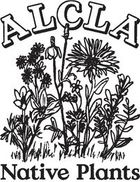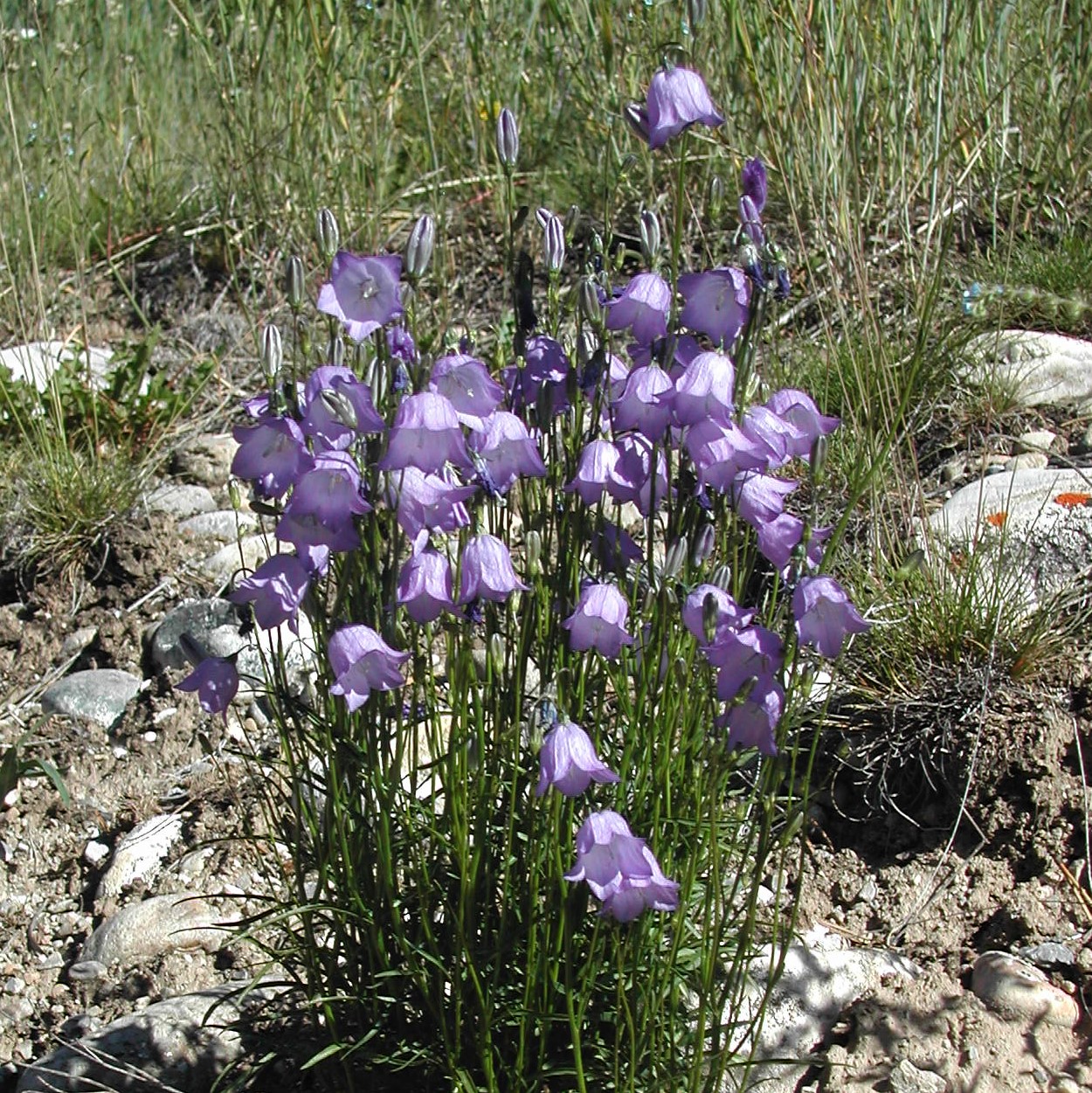This article, written by Dr. Al Fedkenheuer, first appeared in the Calgary Horticultural Society (Calhort) publication Calgary Gardening in 2014. It has been republished with permission and edited for clarity.
Calhort members receive full access to Calgary Gardening archives. To learn more visit www.calhort.org/
Harebell is a lovely hardy, perennial wildflower that can be found growing throughout Alberta and around the world, as it is a circumpolar species [the most up to date scientific name Campanula alaskana denotes the Harebell species found specifically in North America]. It is called Bluebells or Harebells, depending upon what name is used by locals in the area. The name is a combination of the recognizable bell-shaped and blue flowers. More rarely, the flowers can be whitish. Many of us have seen some form of Harebell or Campanula cultivar in gardens around your area.
Sometimes this species is mistaken as a Lungwort (Mertensia sp.), Wild Blue Flax ( Linum lewisii), Jacob’s Ladder (Polemonium sp.), or even the invasive noxious weed, Creeping Bellflower (Campanula rapunculoides). This is the problem with common names, as Lungworts also go under the “Bluebells” name, although the latter usually have another “tag” with them such as “tall,” “mountain,” or “alpine.” Occasionally, you may be lucky enough to observe a field of blue with many Harebell plants. Keep your eyes open as you travel the TransCanada Highway to Banff.
Harebells are geographically widely distributed and have a tolerance of various soils. They grow well in gravel, sand, or rich prairie soil, foothills, and even in rock crevices in the mountains. They are widely adapted and not concerned with which hardiness zone they are in. Harebells grow well in full sun or partial shade. They do not spread via rhizomes but they may reproduce in your garden from the abundant tiny seed that is produced in capsules after flowering.
This is a good species for use in rock gardens, in a native plant garden, or as a companion to other flowers around your home. It will grow upright from 10 to 40 cm tall, depending upon the site. The leaves are of two types with the leaves at the plant base being round while the stem leaves are narrow and linear, up to 7 cm and getting shorter the farther up the stem and closer to the flowers. Typically there are numerous flower stems to a plant, with one or more 1.5 to 2 cm long flowers per stem. Flowering can be expected throughout the growing season from June to September, sometimes occurring as a second blooming.
This species grows best in partial shade to full sun, on a wide variety of dry to moist soil types. It is a hardy perennial and does not like to be over-watered. Propagation is by seed and germination can be achieved by simply sowing seeds directly into a pot, keeping the seeds close to the surface and firming soil around the seed. Germination can be expected in 3-4 weeks. Moistening the seeds and putting them into the refrigerator for up to six weeks may result in a shorter germination time.
In summary, these are adaptable, lovely perennials for adding to a native plant collection or a special touch to your yard.

